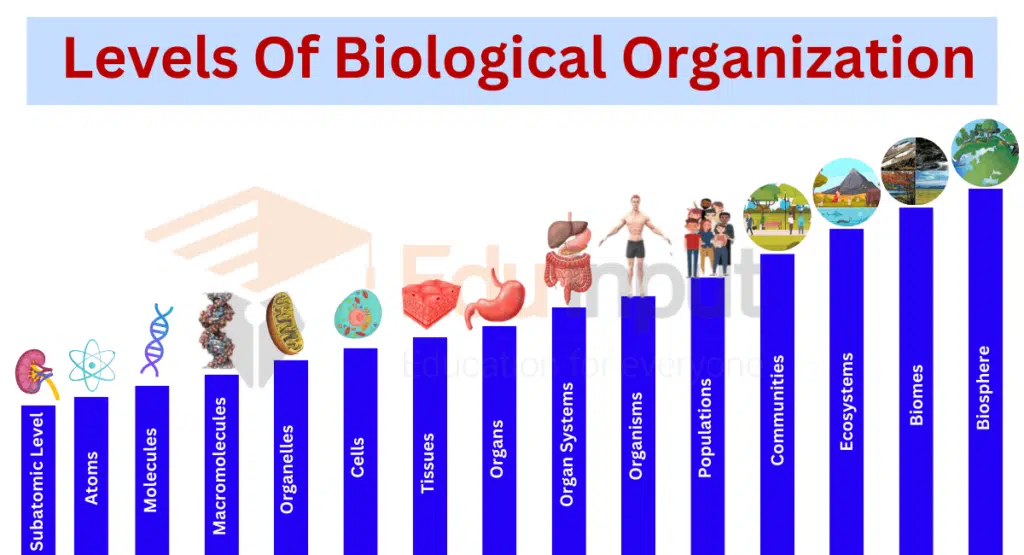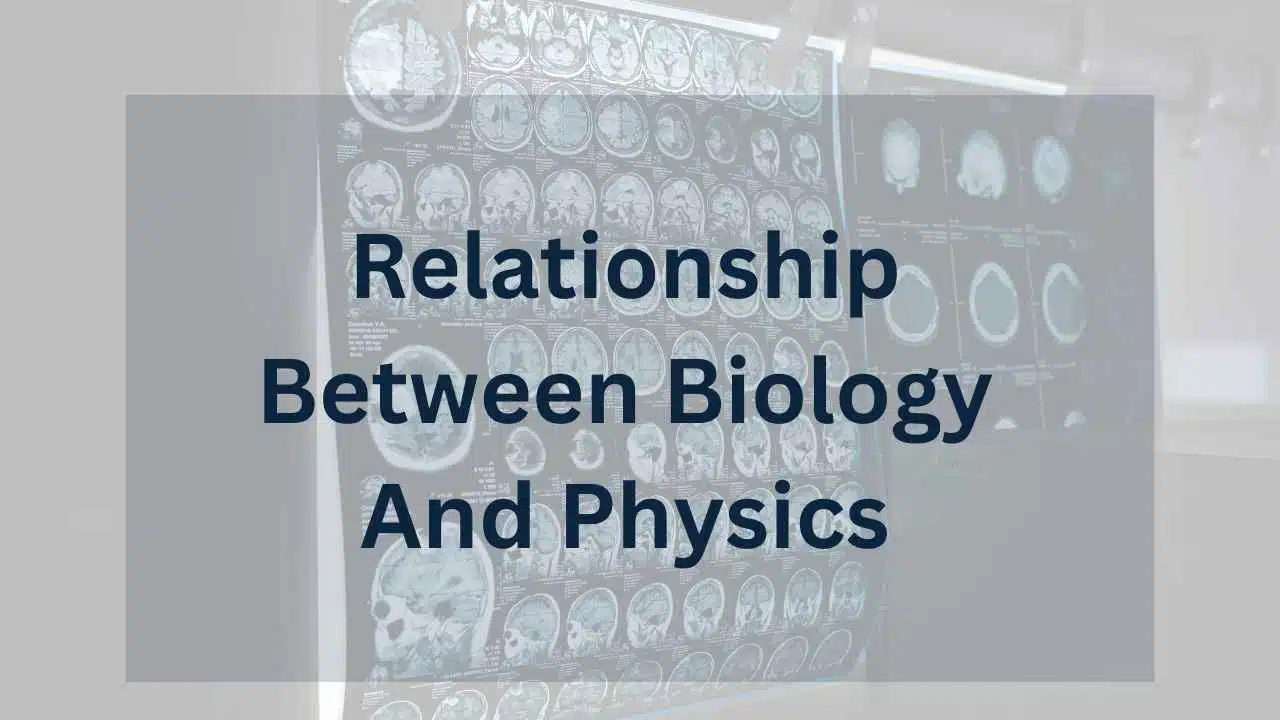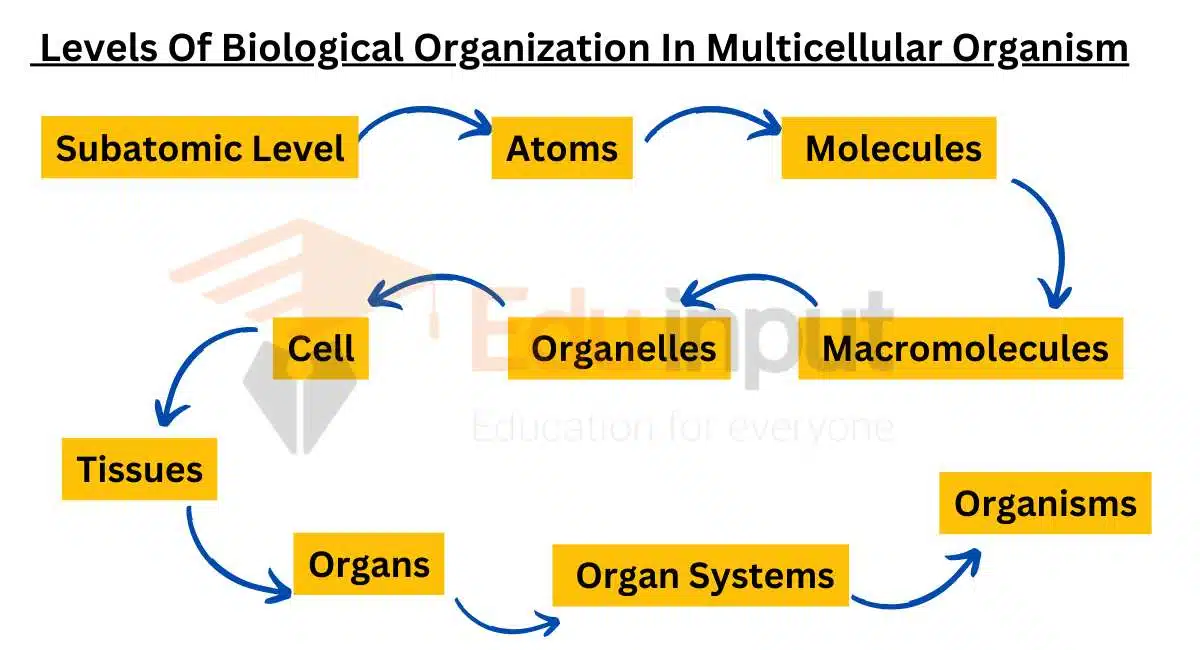Levels of Biological Organization
Biological Organization
The levels of biological organization range from atoms and molecules, to cells, tissues, organs, organ systems, organisms, populations, communities, ecosystems, and finally, the biosphere, which includes all living things on Earth.

For example, the sequence for levels of biological organization within a multicellular organism is as follows: cells, tissues, organs, organ systems, organism.
The biological organization level refers to the basic order of biological functions and characteristics of living beings. All living organisms are classified into different groups based on the different biological organization levels.
Living organisms are complex and have special processes that non-living things don’t have. These processes help living organisms stay alive and function properly.
They have a built-in mechanism that can interact with the environment and regulate their structures and functions. This means they can adapt to changes in their surroundings.
The biological methods provide a systematic approach to studying living organisms and their organization at different levels within the biological hierarchy.
| Key Points |
|---|
| 1. Biological organization encompasses different levels from atoms and molecules to cells, tissues, organs, organ systems, organisms, populations, communities, ecosystems, and the biosphere. 2. Living organisms possess unique processes that distinguish them from non-living things, enabling them to function and survive. 3. The levels of biological organization include sub-atomic and atomic, molecular, organelle and cell, tissue, organ, organ system, and individual levels. 4. Plants and animals exhibit variations in the complexity of their organ systems. 5. Biological organization facilitates the interaction and response of organisms to environmental changes. 6. Understanding biological organization helps unravel the intricacies of living organisms and their functioning. |
Levels of Organization Diagram

Levels of Biological Organization
The biological organization can be divided into the following Levels.
- Sub Atomic and Atomic Level
- Molecular Level
- Organelle and cell level
- Tissue Level
- Organ Level
- Organ System Level
- Individual
For better understanding of Biological Organization See Flow Chart of Levels Of Biological Organization
1. Sub-Atomic And Atomic Level Of Biological Organization
Biologists study life at different levels, starting from the tiniest particles called atoms. Atoms are like building blocks of everything.
They have even smaller parts called electrons, protons, and neutrons. For example, scientists study how electrons move around atoms. This is the smallest level of biological organization.
2. Molecular Level Of Biological Organization
In 2nd level of biological organization, atoms join together to form stable compounds called molecules. Elements, like hydrogen, carbon, nitrogen, phosphorus, and sulfur, combine through a type of bond called a covalent bond.
This bond creates different types of molecules, making a complex variety of compounds. For example, water (H2O) is a molecule formed by the combination of hydrogen and oxygen atoms.
Two types of molecules are found in an organism’s body:
Micromolecules: Micromolecules are compounds that have lower molecular weight like carbon dioxide water etc.
Macromolecules: Macromolecules are compound that has high molecular weight like starch and protein.
3. Organelle And Cell Level Of Biological Organization
After the molecular level, the next level of biological organization is the organelle level, where specialized structures within cells perform specific functions.
The sub-cellular structures/ organelles combine to form a cell. The organelle is a kind of organ of a cell.
The function of the cell is accomplished by the function of the organelle comparable to the organ of the body. Organelles are subcellular structures that perform their specific functions.
For example, mitochondria are the powerhouse of the cell which produces energy.
4. Tissue Level Of Biological Organization
After the cell level, we move to the tissue level of biological organization. Cells that perform the same functions collectively make a tissue. They are specific in their function.
Each tissue is specialized in carrying out specific functions. For example, muscular tissues are specifically designed for contraction, allowing movement in the body, and nervous tissues are designed to maintain coordination of the body.
5. Organ Level Of Biological Organization
Tissues performing the same functions make an Organ. Organ formation is more Complex and defined in animals. Organs are part of the organ system, the total function of one process or phenomenon is performed in this system.
For example, the Stomach is specialized for food digestion, so it digests the food.
6. Organ System Level Of Biological Organization
The organ level of organization of plants is less definite than in animals. Mostly the body of a plant can be divided into roots, stems, leaves, and reproductive structures. Each of these structures performs a clear-cut function.
- Roots fix the plant, it also stores food and absorbs minerals.
- The shoot (stem + leaves) supports all the plants.
- The leaves are the primary organ to synthesize food. As photosynthesis happens in chloroplasts in leaves.
- Flowers are their reproductive structures and are used for reproduction. They produce the next generation.
7. Individual Level Of Biological Organization
The various organs and organ systems join to form an individual or a whole organism
- The whole organism has its individuality in its characteristics. It is different from the members of the same species, for example, every human being has different characteristics even if their fingerprints don’t match.
- Various functions, processes, and activities of an organism coordinate. All the systems work in coordination with one another. For example, if a man exercises continuously, the working of his muscles increases, and his rate of respiration and Heartbeat increase. It supplies muscles with increased oxygen and food. Muscles need oxygen and food for continuous exercise. Thus the whole system works in coordination during the whole process.
- The nervous system and endocrine systems are used for coordination in animals, but in plants, some hormones regulate long-term activities.
- The organism act as a whole it interacts and responds to changes in the environment as a whole.
Difference between the Organ System of Plants and Animal
Organs are present in plants too but there is no organ system formation in the plant body. Thus there is a complexity in the organ system of animals, they perform the greatest range of functions and activities than plants.
Levels of biological organization worksheet

Related FAQs
What are the levels of organization?
Organisms are organized from the simplest level to higher levels, these levels are?
Subatomic Level
Atomic Level
Molecular Level
Tissue Level
Organ Level
Organ system level
organism level
population
community
Ecosystem
Biosphere
What are the levels of organization to study?
Levels of the organization are important to study as they help to classify and study different interactions of ecosystems.
What is the highest level of organization?
The biosphere is the highest level of organization. It is the global ecological system that includes all organisms.
Which level of biological organization includes all parts of earth and its atmosphere where life can survive.
The level of biological organization called the biosphere includes all parts of Earth and its atmosphere where life can survive.






Leave a Reply